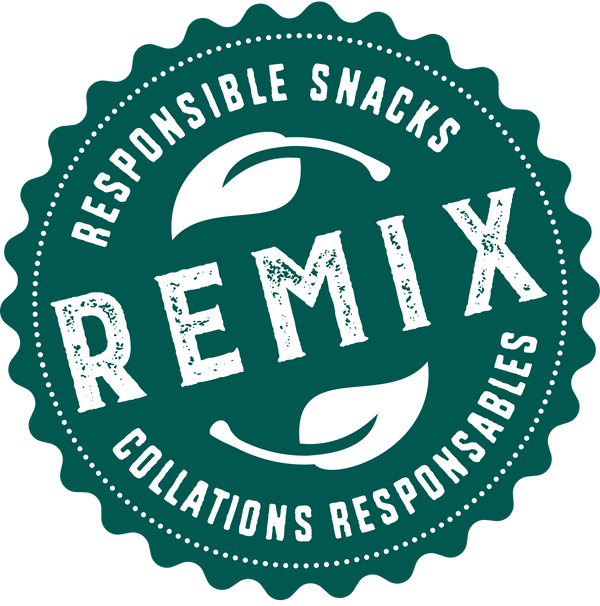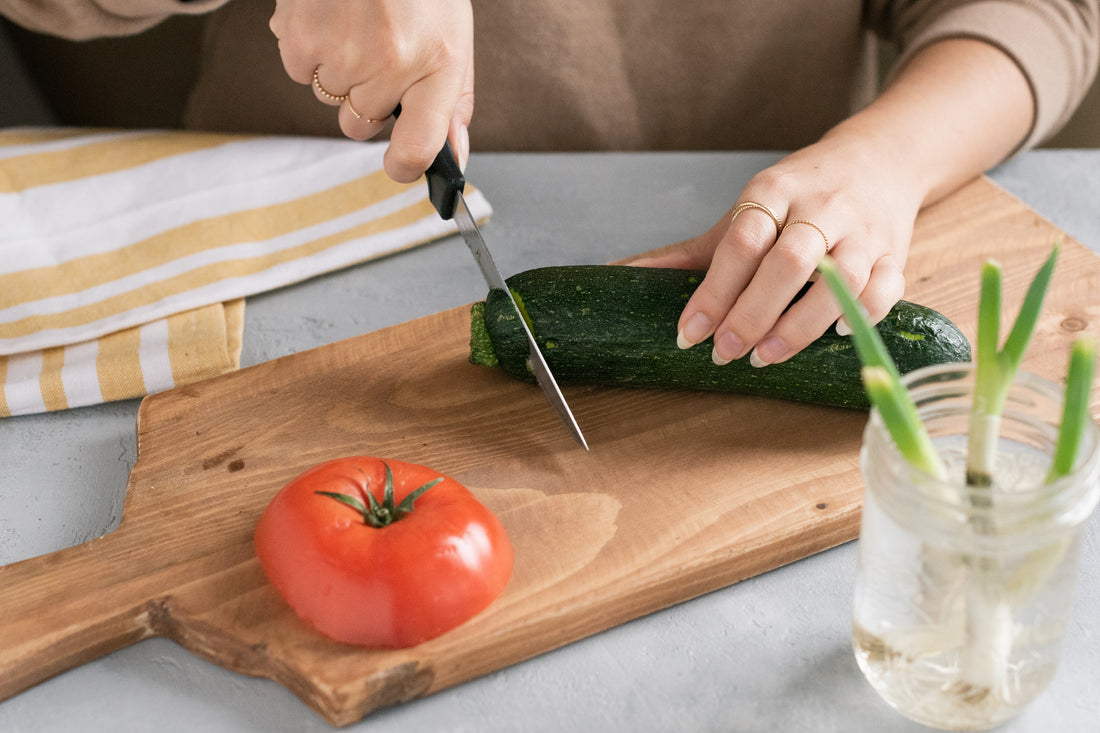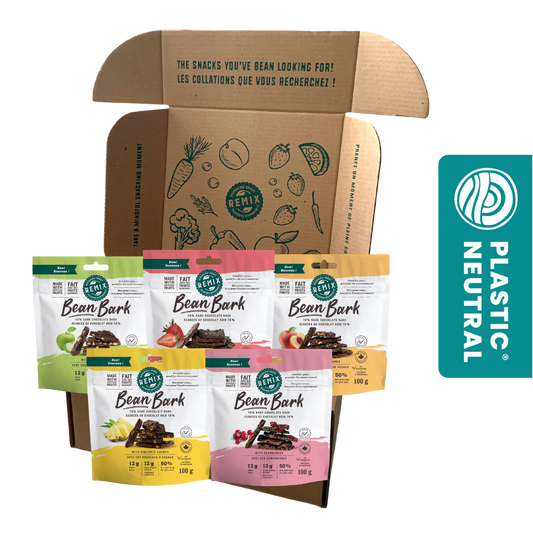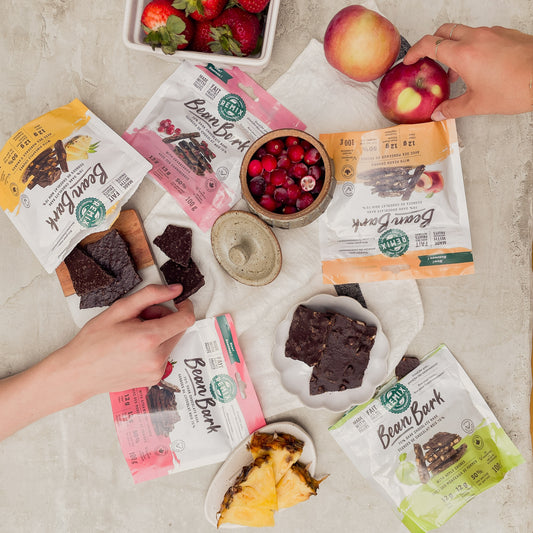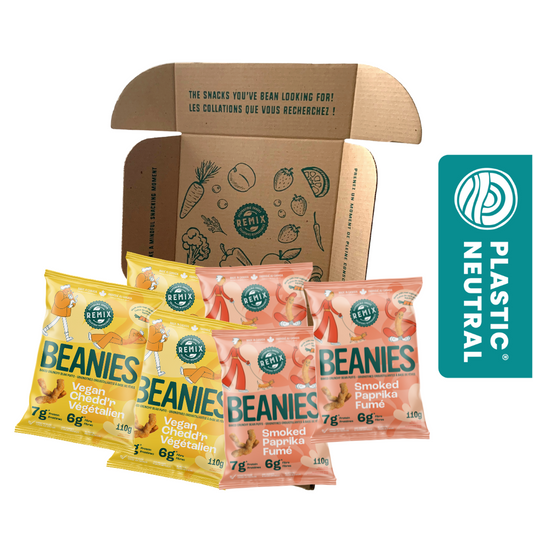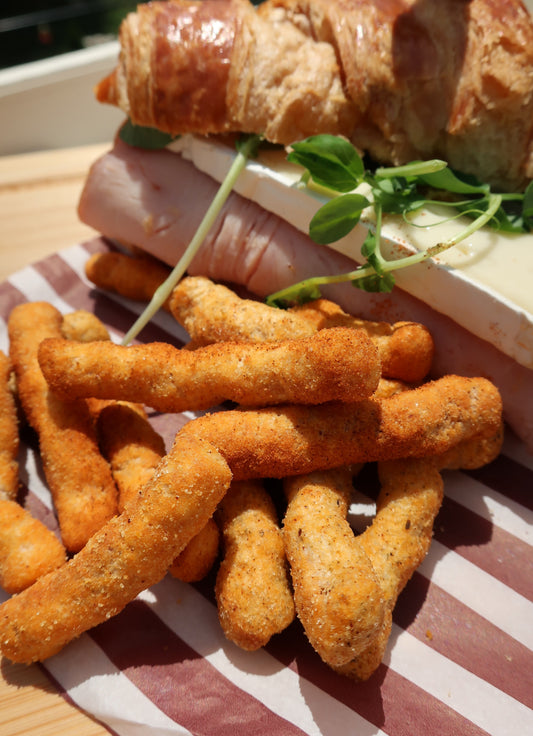
5 top tips to not waste food while saving money
Written by: Fannie Dancose, April 2020
How many times has this happened to you: where you buy some vegetables for a recipe, use only parts of it, forget about the rest in the fridge and find out a couple of days later that it has all gone mushy and smelly?
It’s frustrating, and it’s a problem that a lot of us face. In fact, each Canadian household throws out 85 kg of food per person in the garbage each year. That’s as heavy as one kangaroo (1)! If they could completely eliminate that waste, they would save $1000 per year (2). Imagine what you could do with almost a thousand dollars in your pocket?!
This problem is also worldwide. It is estimated that half of the food produced finds itself in landfills and never gets eaten. HALF. It’s like for each tomato you would grow in your garden, you would throw another one in the garbage. (3)
Here, at Remix Snacks, we care about the environment and we want to help you reduce food waste by sharing with you tips on how to do it!
1. Plan ahead
Before going to the grocery store, check what is in your fridge and cupboard. You will know what you have and what needs to be used as soon as possible. You can also check what foods are on sale.
These steps can give you ideas of what you can cook in the coming days. When you have a menu in mind and know how you will use leftovers, make a grocery list and try to stick to it as much as possible.
2. Store Properly
A lot of food can be saved if you know where it goes. The different parts in your fridge are not exactly at the same temperature. The doors are a bit warmer so it is best not to store milk and dairy in them. In the drawers, store fruits and vegetables depending on their ripening process. Some fruits and vegetables produce a gas that speeds up ripening. Try to keep these foods (tomato, apple, mushroom, peaches…) together. Finally, some vegetables don’t need to be in the cold but rather just in a dark place, like potatoes and onions.
You can also use the “First in, First out” method. It’s simple: the food that you buy first has to be used first. For example, if you buy yogurt, use it completely before you open the other jar you bought the week after. This will prevent forgetting about some food or leftovers that you need to eat. You can find it useful to label the date so you know when it was made.
3. Freeze
It can be useful to freeze food that you buy in bulk or that you know you won’t be able to consume quickly enough.
Bread can be frozen right after you bought it, and it won’t lose its freshness after thawing.
Ice trays can be used for lots of things other than water. For example, fresh herbs or leafy green vegetables, like spinach, can be cut and frozen into cubes. Same thing for that quarter cup of tomato paste left in the can after making your grandma’s tomato sauce recipe. Put that thing in the freezer and save it for later!
4. Find Recipes to Use Leftover Food
It’s hard to find inspiration for a recipe that can use your leftovers or old food bits and pieces. We tend to overlook meals that are versatile and can vary depending on the ingredients you have on hand.
If you have fruits, you can add them to smoothies or do a fruit crumble. If you have vegetables, you can make a soup or a stir fry.
The principle is to have in mind easy recipes that you can adjust based on your ingredients. There are also some resources that can help you find some ideas. (See bottom of the page.)
5. Take Kitchen Scrap and Transform Them
There is a saying that a person’s garbage is another’s treasure. Well, what you think is garbage, like bones, peels, leaves, stalks, can be used one last time before heading to your compost bin.
- Bones or peels can be turned into broth,
- Leaves and stalks add flavour to sauces or vinaigrette,
- Fruit core and peels can be infused in syrup of some sort and use it in cocktails,
- Citrus peels in diluted vinegar can scent a homemade all-purpose cleaner.
Who would have thought that kitchen scrap could be the base of many DIY projects!
Bonus tip: Buy products that revalue fruits and veggies
More and more companies are using “ugly” or “imperfect” fruits and vegetables to save them from going to the landfill. We say “ugly” because they are bruised or not marketable since their appearance does not respect certain aesthetic norms, but they are as good and as nutritious as “perfect” fruits and vegetables. By buying certain brands of juice, jams or Bean Bark you help reduce the amount of food that would have been wasted!
We hope that these tips will really help you reduce waste, save money and increase your awareness about the environment and the impact we have on it. If you want to learn more on ways to better plan or use food check out some incredible resources on Love Food Hate Waste Canada, Glouton, and Chic Frigo Sans Fric.
-
WWF. (2020). Red Kangaroo. Retrieved from https://wwf.panda.org/our_work/wildlife/profiles/mammals/red_kangaroo/
-
Von, M., Parizeau, K., Gallant, M., Wickson, M., Haines, J., Ma, D., . . . Duncan, A. (2019). Valuing the multiple impacts of household food waste. Frontiers in Nutrition, 6, 143-143.
-
National Zero Waste Council. (2018). A Food Loss and Waste Strategy for Canada. Retrieved at http://www.nzwc.ca/focus/food/national-food-waste-strategy/Documents/NZWC-FoodLossWasteStrategy.pdf
